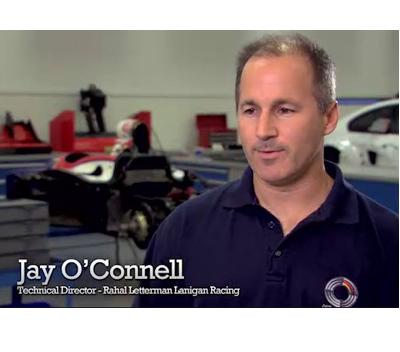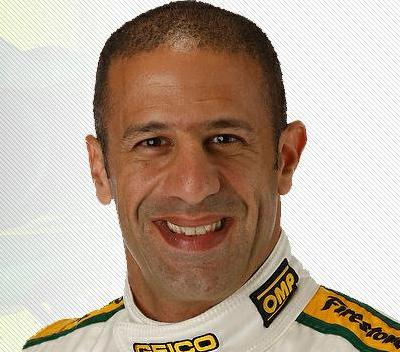Jay O’Connell, who is Rahal Letterman Lanigan Racing‘s Technical Director, is our online engineering instructor for SAFEisFAST through March 3, taking over the chair from Tony Kanaan.

Jay O’Connell has worked in IndyCar, Formula 1 and GT as well as in product development for Ford. [SiF screen grab]
Following graduation from Cornell in ’88 with a degree in mechanical engineering, O’Connell joined Ford Motor Company in product development. He became Ford Racing’s CART program manager in 1998 and, three years later, transferred to England to work for the Jaguar Racing Formula 1 team as head of Research and Development.
He returned to Michigan in 2002 and continued in Ford product development on the new Mustang program. In 2005 he was promoted to SVT Chief Vehicle Engineer and headed a team of 25 engineers to develop the Shelby GT500 Mustang as well as the suspension redesign of the Ford GT.
The lure of racing enticed him back to the sport at the end of 2006 when he joined Rahal Letterman Lanigan Racing as technical director. The team captured INDYCAR poles and wins in the 2007 and 2008 seasons, and from 2009 through 2012 successfully raced the BMW M3 GT, capturing the ALMS manufacturer and team championships in 2010 and 2011, along with the driver’s championship in 2011. For 2013, RLL Racing will field as many as three cars in the IZOD IndyCar Series and develop two brand-new BMW Z4 GTE cars in the American Le Mans Series.

Jay is adept at boiling complex concepts in vehicle dynamics and aerodynamics down into digestible language as witness his past contributions to SAFEisFAST on Chassis Set-Up. Check them out in the video section. [SiF screen grab]
“From Formula SAE to Formula 1 and the Indy 500, I look forward to answering questions about race car engineering, strategy, and how to be competitive at every level of the sport,” said O’Connell. You’ve got until March 3 to submit questions to Jay.
Tony Kanaan Wraps Up Week of Q&A

Veteran professional racing champion Tony Kanaan adroitly handled 27 questions as SAFEisFAST online instructor.
Tony Kanaan took time from his busy schedule to answer questions from our audience on a variety of topics starting, of course, with setting an ultimate racing goal and climbing the ladder. No matter the goal, Kanaan recommends karts as a first step – “That’s where the magic begins.” And put in the time, lots of it.
He stresses the concept of maintaining momentum in under-powered machinery, be it karts or small formulae. Tony discusses the pros and cons of having an “eclectic” racing resume and how you use it to advance your career; winning at whatever level is the key to being noticed; is learning heal/toe necessary these days; the value of patience and dealing with anxiety; showing respect when entering a new venue like oval track racing for the first time; rebuilding confidence after a bad accident; making the best of having mid-pack equipment.
Kanaan also touched on these topics: the intricate process of car set-up, particularly at Indianapolis. For young drivers, Europe or the Road to Indy? No mind games required. The value of physical training for drivers at every level. Using karts as a training tool to stay sharp in the off-season. Switching between sports cars and open-wheeled race cars. The value of having a racing-savvy manager early in one’s career. Applying the two-year rule to the ladder – a year to learn; a second to win – then move. Jumping the experience-gap requires study and intense training. Trail-braking vs. coasting – depends on the car. Getting to know your engineer and the value of precise feedback.
On finding those extra fractions of seconds – “Practice, practice and practice. Then practice some more.” And the best advice for a young driver – “Be persistent and never give up!”
